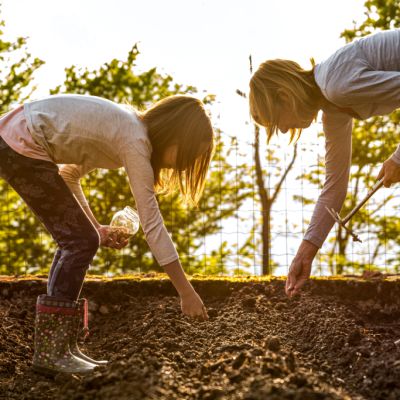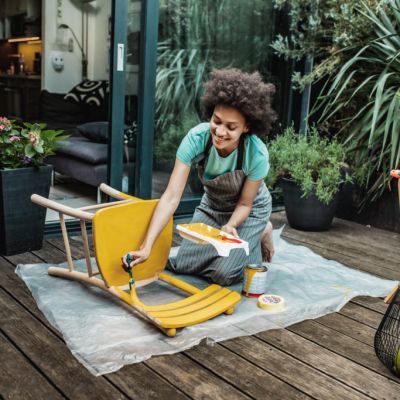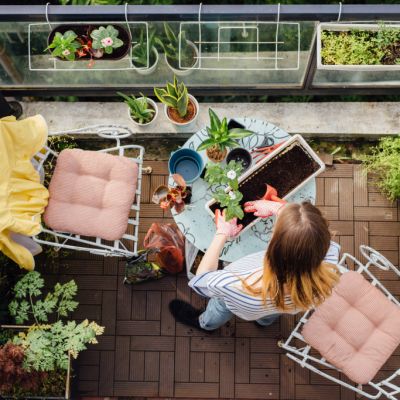5 ways to get the most out of your backyard this winter
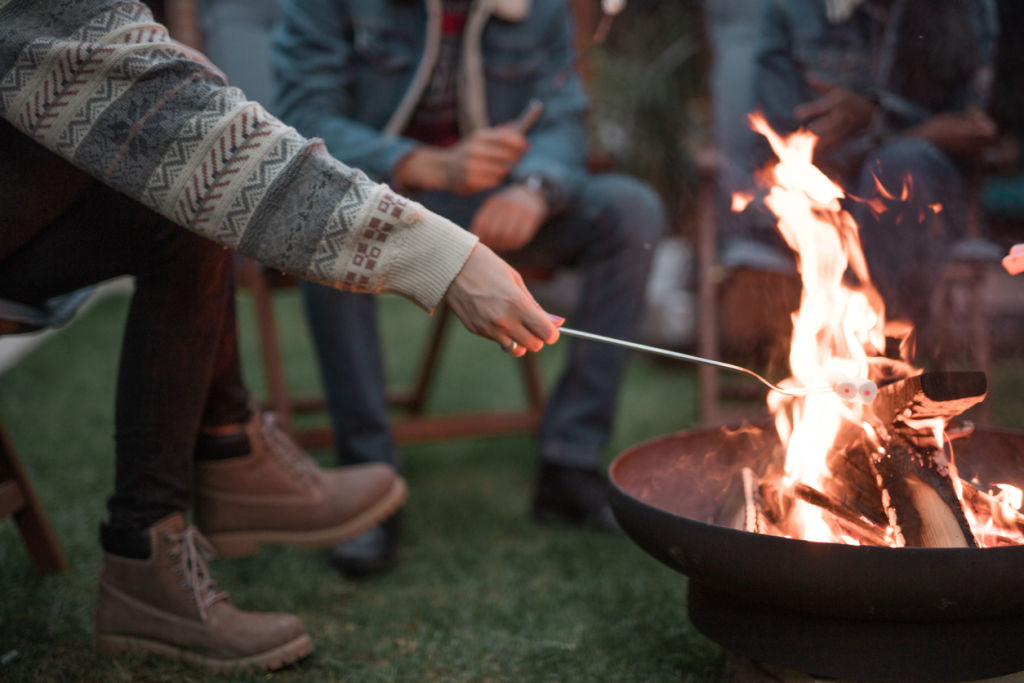
With long summer days now a distant memory and the mercury starting to drop, thoughts turn to cosy winter nights spent indoors huddled around the fire or snuggled under a toasty blanket.
But just because it’s getting cold out doesn’t mean we have to lock ourselves away for the winter months – lord knows we’ve spent a heck of a lot of time indoors this past year.
Here’s how to prep your outdoor area for the cooler months ahead, to ensure you can use the space in rain, hail or shine.
Turn up the heat
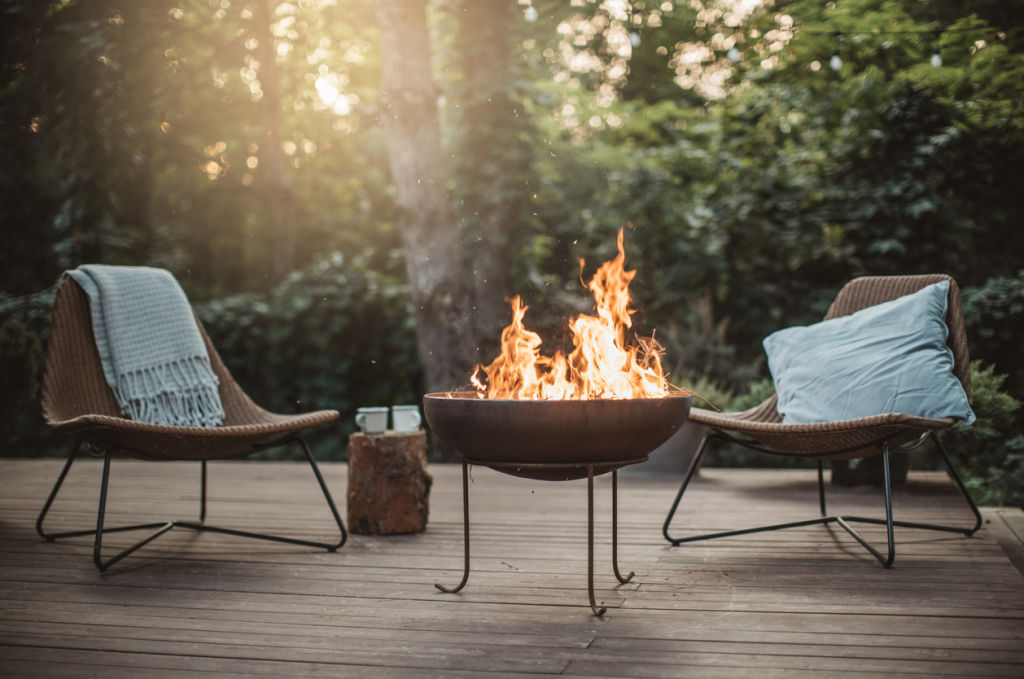
When it comes to enjoying your outdoor area year-round, adding some sort of heat source is a bit of a no-brainer.
There’s nothing quite like a roaring fire to warm cold bones and, according to Darin Bradbury from Mint Landscape Design, fire pits are a popular and economical choice for people looking to inject some warmth.
“When it comes to fire pits, there’s always a question around whether people go for a wood-fired fire pit or a gas fire pit, or there’s also eco-fuel ones as well. We always recommend that people use wood-fired, mainly because they actually put out heat whereas the gas ones, although they’re convenient, they don’t put out much heat – they’re really just ornamental.”
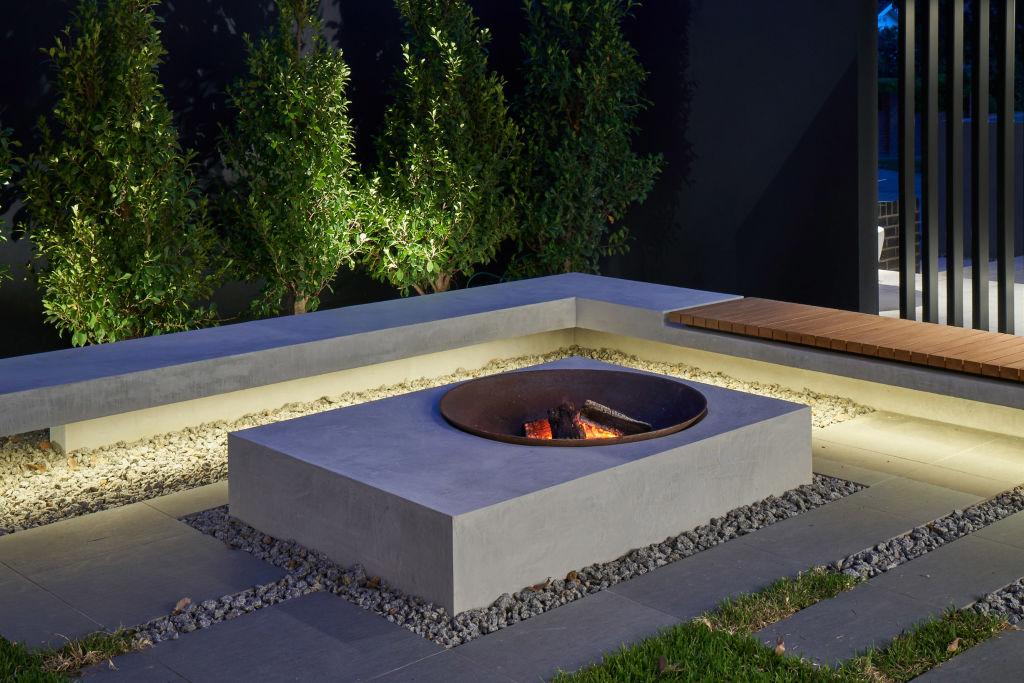
Portable fire pits are a great option for those short on space but Bradbury says built-in fire pits are now becoming a standout feature in plenty of gardens, doubling as functional tables and bench space.
“People are taking it to a whole new level,” Bradbury says.
Gas or electric radiant strip heaters that can be installed on a pergola or other roof structure are another effective way to warm an outdoor area.
“Gas ones give out more heat but the electric ones look really nice – nice and slick. They can be reset into the roof or pergola and they give heat directly over where you’re sitting,” Bradbury says.
“They’re a nice option but they’re certainly not a budget option for people.”
Screening
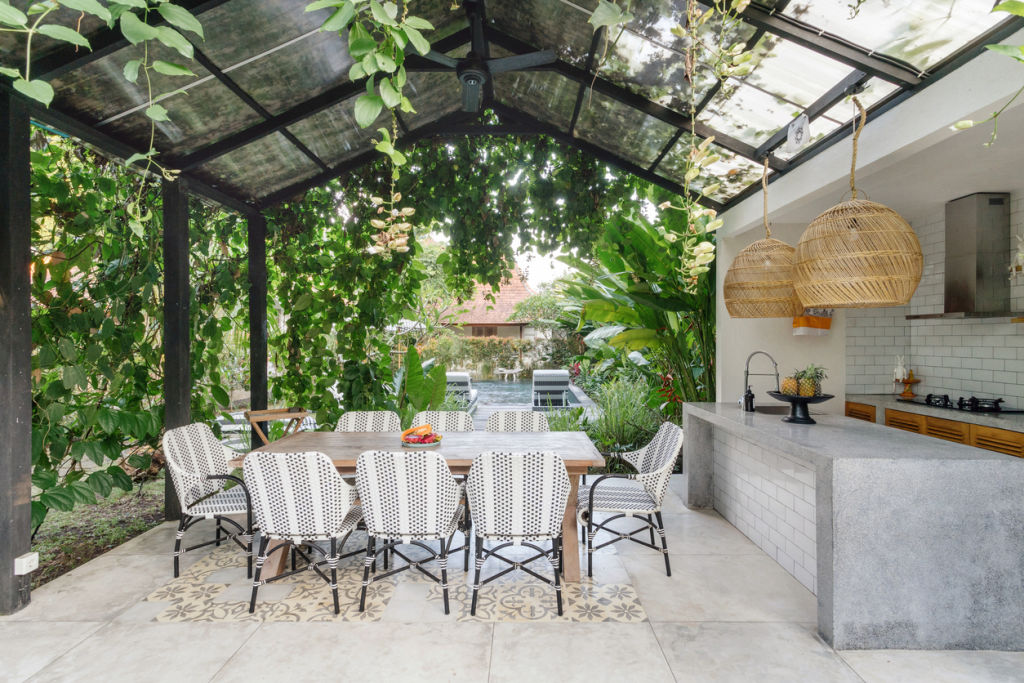
Protection from the elements is an important factor to consider at any time of year.
“When designing an outdoor area what you really want to do is create an intimate space that feels protected … protecting people from wind is probably the most critical thing,” Bradbury says.
An easy solution he suggests is to opt for hedging or screening plants such as lilly pilly, ornamental fig, Portuguese laurel, orange jessamine or sweet viburnum to keep the cold out.
“These narrow, dense hedging plants will help to create a windbreak and stop the cold southerly winds blowing through, and close in an area to create a more protected ambience.”
A step up would be to install external shutters or blinds, or build timber batten screens or masonry walls to create a physical barrier to block out the cold.
“The more enclosed and intimate a space feels the more you want to be in it,” Bradbury says.
Light the way
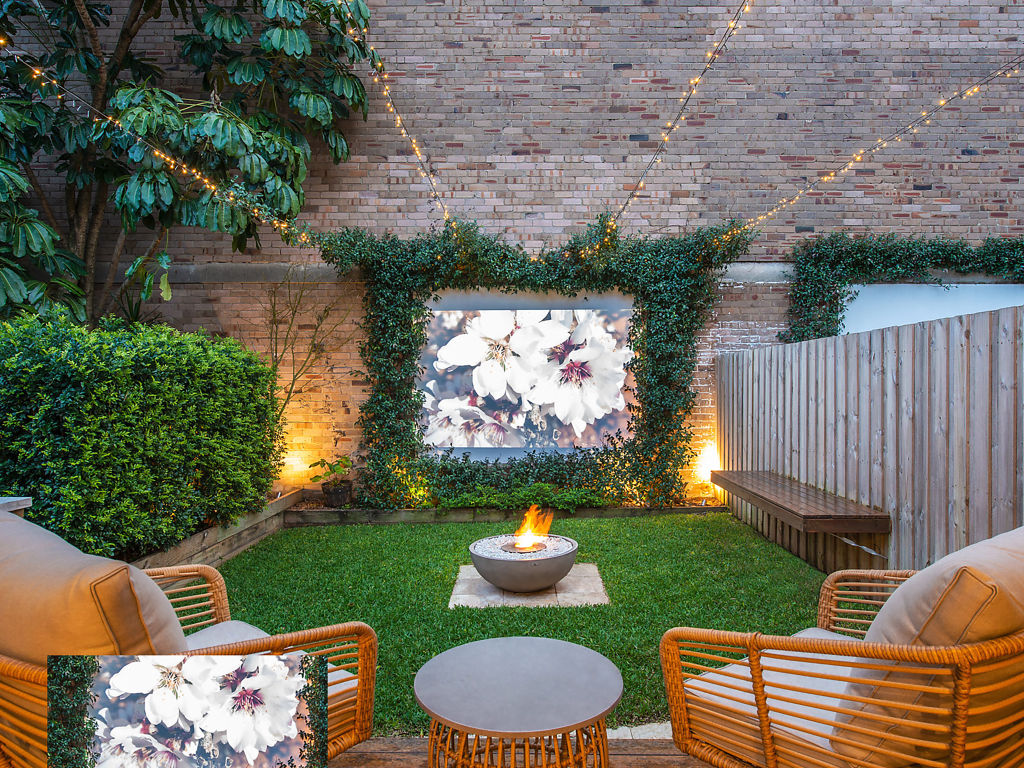
With the sun setting much earlier than we’d like, ensuring you have sufficient lighting is key when it comes to enjoying your outdoor space, according to interior designer Meredith Lee.
“Lighting is pretty critical and it’s something that is often overlooked outdoors.”
For Lee, directional lighting (that is, lights over areas where you need to clearly see what you’re doing – dining, barbecue and bar zones, for example) and mood lighting (think rechargeable lamps, candles and lanterns) will make your space sparkle.
Invest in weatherproof furniture
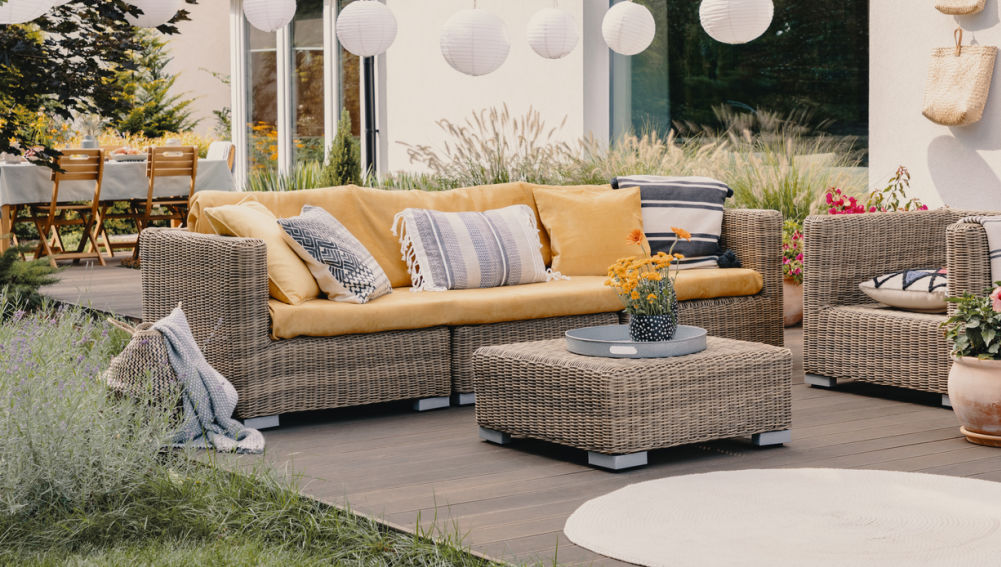
Whether you’ve got dining or lounge zones in your backyard, it’s wise to invest in quality furniture that will stand the test of time, and the elements.
“It’s important to choose the right outdoor furniture … you really need to look at the quality and the suitability for the type of weather you think the furniture will experience,” Lee says.
“Outdoor fabric is important to select because they’re specifically designed for outdoor conditions.”
Ensure lounge cushions are made from quick-dry foam as opposed to regular foam to avoid mould build-up.
Embrace soft furnishings
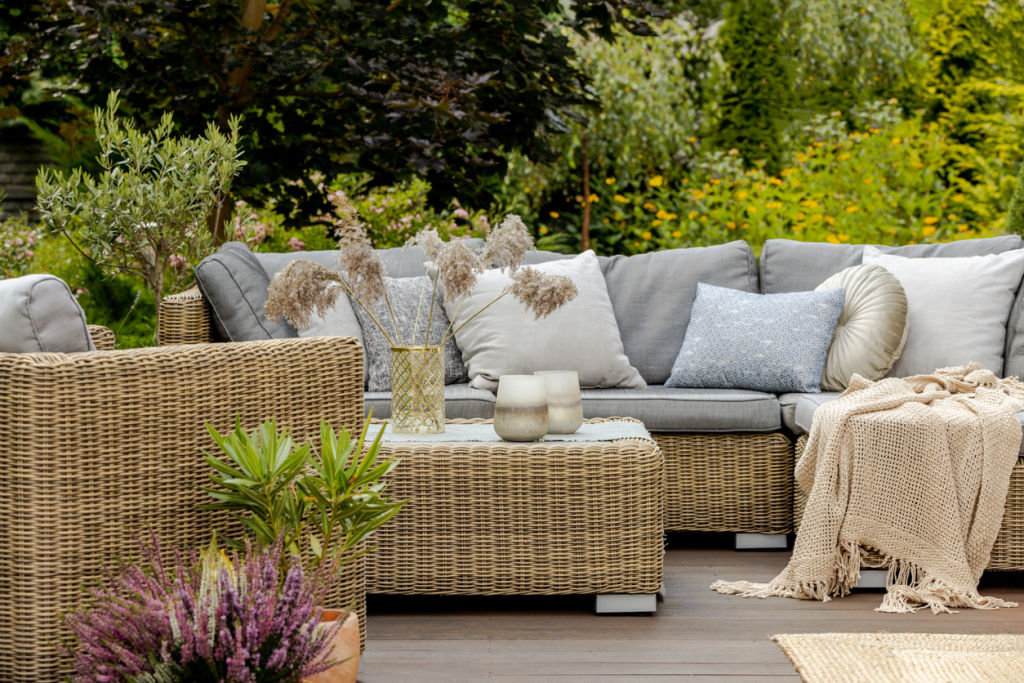
For Bradbury, an outdoor area is no different to an interior space – you want to create a space that’s desirable – and adding soft, warm furnishings such as cushions, blankets and rugs helps make a space you’ll want to use.
“Bring those soft elements in and suddenly you really want to go and sit out there and you feel like you can use it for a longer period of time.”
Lee says: “It is about making them [outdoor areas] comfortable to be in – it is about having the warmth and the lighting and the cosiness out there, and making a reason to go out there to enjoy catching up with friends and family.
“Outdoors can be a bit of an afterthought for people but it’s important to consider the comfort and the longevity of things.”
States
Capital Cities
Capital Cities - Rentals
Popular Areas
Allhomes
More
- © 2025, CoStar Group Inc.
